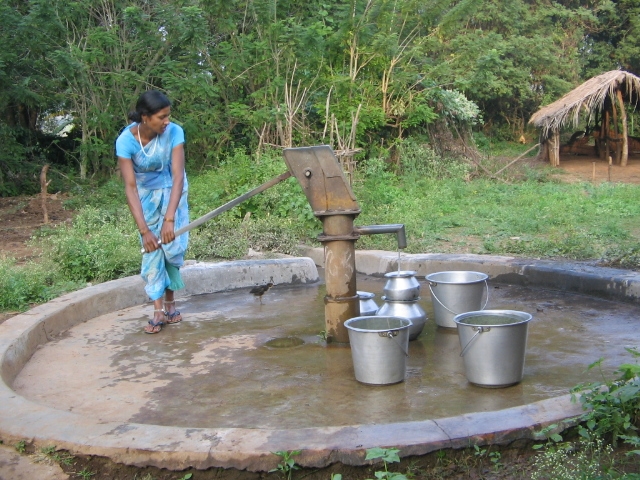A Brief Colonial History Of Ceylon(SriLanka)
Sri Lanka: One Island Two Nations
A Brief Colonial History Of Ceylon(SriLanka)
Sri Lanka: One Island Two Nations
(Full Story)
Search This Blog
Back to 500BC.
==========================
Thiranjala Weerasinghe sj.- One Island Two Nations
?????????????????????????????????????????????????Thursday, March 31, 2016
Bore-Wells & Salinity In Jaffna
By Willie D. Joshua –March 30, 2016

Danger of soils becoming saline from bore-wells water in the Jaffna Peninsula
Fresh water supplies and arable land are at risk due to indiscriminate
digging of bore wells resulting in saline water extraction. Simple
methods for mapping the depth of usable water are proposed that can be
used to guide well-depth and prevent significant environment
degradation. This information can also be used to estimate the available
groundwater for human use.
 Recently, there has been a trend in drilling bore wells in the Jaffna Peninsula
to extract groundwater for domestic use. This practice is to be
implemented for houses being built with foreign aid to settle displaced
people in the war torn area. These wells are constructed by drilling
about 15cm (6 ins) circular holes right down to the groundwater. The
water from these bore wells is used directly by hand pumps or is pumped
to an overhead tank and distributed by pipes within the house for
domestic use. The groundwater in the peninsula consists of a fresh water
layer underlain by salt water. There is a danger that if the bore well
goes down to the depth of the saline layer, the pumped out water will be
brackish. Thus, there is a possibility of good land becoming saline if
this water is used. There have been some instances in Jaffna, where the
waters from the bore wells are brackish and not usable even for domestic
purposes. Therefore, the depths of the bore wells have to be above the
saline groundwater. The Northern Provincial Council has already been
informed of this potential problem and remedial measures also have been
suggested.
Recently, there has been a trend in drilling bore wells in the Jaffna Peninsula
to extract groundwater for domestic use. This practice is to be
implemented for houses being built with foreign aid to settle displaced
people in the war torn area. These wells are constructed by drilling
about 15cm (6 ins) circular holes right down to the groundwater. The
water from these bore wells is used directly by hand pumps or is pumped
to an overhead tank and distributed by pipes within the house for
domestic use. The groundwater in the peninsula consists of a fresh water
layer underlain by salt water. There is a danger that if the bore well
goes down to the depth of the saline layer, the pumped out water will be
brackish. Thus, there is a possibility of good land becoming saline if
this water is used. There have been some instances in Jaffna, where the
waters from the bore wells are brackish and not usable even for domestic
purposes. Therefore, the depths of the bore wells have to be above the
saline groundwater. The Northern Provincial Council has already been
informed of this potential problem and remedial measures also have been
suggested.
There are three types of wells in use in Sri Lanka namely agro-wells,
tube wells and bore wells. Agro-wells, also referred to as dug-wells,
are the ones commonly in use in the Jaffna Peninsula and elsewhere in
Sri Lanka. Water from these wells are used both for domestic and
irrigation purposes. These are large diameter (2-3m) wells whose depths
do not go beyond 1m below the dry season water table.

